Your Essential October Gardening Guide
October arrives with a flourish of golden leaves and a crisp chill in the air, signalling a beautiful transition in the garden. While it may feel like the season is winding down, this month is a crucial and exciting time for gardeners. It’s our chance to put the garden to bed for winter, while simultaneously sowing the seeds of next year’s floral triumphs. Let’s roll up our sleeves and explore the essential jobs that will keep your garden thriving.
Putting Your Garden to Bed for Winter
A little effort now pays huge dividends next spring. Tidying up and preparing your beds creates a healthy foundation for the year ahead. Here are some key tasks to focus on:
- Clearing out dead plants and debris: Removing any dead or decaying plant material helps prevent pests and diseases from overwintering in your garden. It also makes it easier to see what needs pruning or dividing.
- Pruning and dividing: Fall is the best time for many plants such as roses, hydrangeas, and fruit trees. Prune away dead or damaged branches, remove any suckers, and thin overcrowded areas to allow better air circulation. You can also divide perennials that have outgrown their space.
- Mulching: Applying a layer of mulch will help protect your plants’ roots from extreme cold temperatures
The Great Autumn Clean-Up
As leaves begin to fall, it's tempting to let them lie, but a thorough clean-up prevents pests and diseases from overwintering in your garden. Start by raking fallen leaves from your lawn and borders. Don’t throw them away, though! These leaves are pure gold for gardeners. You can create a leaf mould pile by gathering them in a corner or a bin bag (pierce it with a fork for air). In a year or two, you’ll have a rich, crumbly soil conditioner that your plants will adore.
While you're at it, remove any finished annuals and vegetable plants from your beds and containers. This clears space and stops diseases from spreading. Add healthy plant matter to your compost heap, but be sure to bin or burn anything showing signs of disease like black spot or mildew.
The Joy of Composting
October is the perfect time to give your compost bin some love. A well-managed compost heap is the heart of a sustainable garden, turning kitchen scraps and garden waste into nutrient-rich food for your soil.
Give your compost a good turn with a garden fork. This aerates the mixture, speeding up decomposition over the colder months. Aim for a good balance of "greens" (like grass clippings and kitchen scraps) and "browns" (like cardboard, woody stems, and fallen leaves). If it looks too dry, add a little water. If it’s too slimy, mix in more brown material. By spring, you'll have a wonderful, dark compost ready to enrich your soil.
Prepare for a Spectacular Spring
What we do in October dictates the colour and life we see when the world reawakens. This is your moment to plan for a breathtaking spring display.
Planting Spring-Flowering Bulbs
Imagine drifts of vibrant daffodils, regal tulips, and delicate crocuses bursting forth after a long winter. That dream begins now. Planting bulbs is one of the most rewarding autumn jobs.
Choose firm, healthy bulbs and plant them at two to three times their own depth. Daffodils, crocuses, and hyacinths are reliable choices that will return year after year. For a natural look, gently scatter them across a border or under a tree and plant them where they land. Tulips look fantastic planted in bold groups in borders or pots. Don’t forget alliums for their striking architectural globes that will provide drama in early summer.
Time to Plant Garlic
If you love cooking with your own produce, now is the time to plant garlic. It’s incredibly easy to grow and needs the winter chill to form plump, juicy cloves.
Simply buy garlic bulbs from a garden centre (avoid supermarket garlic, as it may not be suitable for our climate). Break the bulb into individual cloves and plant them about 15cm apart and 2.5cm deep, with the pointed tip facing upwards. Choose a sunny, well-drained spot, and by next summer you’ll be harvesting your very own flavourful garlic.
Essential Plant and Lawn Care
Caring for your existing plants and lawn ensures they survive the winter and emerge strong and healthy next year.
The Art of Pruning
Pruning can feel daunting, but it’s a vital task for maintaining plant health and shape. In October, focus on tidying up climbing roses, cutting back any long, whippy shoots to prevent them from being damaged by winter winds. It’s also a good time to prune deciduous trees and shrubs like dogwood and hazel, removing any dead, damaged, or crossing branches.
Once your herbaceous perennials—like hostas, geraniums, and delphiniums—start to die back, you can cut their foliage down to ground level. This tidies up your borders and removes hiding spots for slugs and snails. However, consider leaving some plants with attractive seed heads, such as sedums and ornamental grasses, as they provide structure and food for birds through winter.
Lawn Care for a Lush Spring Carpet
Your lawn might not be growing as fast, but it still needs attention. October is your last real chance to get it in shape before winter.
Start by raking away fallen leaves and any moss buildup, a process known as scarifying. Afterwards, aerate the lawn by spiking it with a garden fork, especially in high-traffic or compacted areas. This improves drainage and allows air to reach the roots. A final mow on a high setting will leave it neat but not too short to withstand the frost.
Protecting Your Tender Treasures
As the first frosts threaten, it’s time to protect your more delicate plants. Tender perennials like fuchsias and pelargoniums can be moved into a greenhouse, conservatory, or a bright windowsill indoors.
For plants that must remain outside, such as tree ferns or exotic palms, a little winter protection goes a long way. You can wrap them in horticultural fleece or hessian, and pack the crown with straw for extra insulation. Move tender plants in pots to a sheltered spot against a house wall to shield them from the worst of the weather.
Get Ready for Next Year
With the main tasks done, you can enjoy the final days of autumn sunshine and start dreaming about the garden to come. Clean your garden tools with a wire brush, sharpen the blades, and wipe them with an oily rag to prevent rust. Check your fences, sheds, and trellises for any necessary repairs.
Finally, grab a notebook and a warm cup of tea. Sketch out your ideas for next year’s garden. What worked well this year? What would you like to change? Planning now, while the memory of this season is fresh, is the first step towards an even more beautiful and productive garden next year. Enjoy the process!
October in the Garden: A Job for Every Day
Gardening Tasks for October
Week 1 (October 1–7): Preparing for Autumn
( Click on the Jobs Links to See our Guide / How To: )
- October 1:
- October 2:
- October 3:
- October 4:
- Plant spring-flowering bulbs (e.g., tulips, daffodils, crocuses).
- October 5:
- Divide and replant perennials like hostas and daylilies.
- October 6:
- Prune climbing roses and tie them securely to supports.
- October 7:
- Aerate and scarify the lawn to improve drainage and remove moss.
Week 2 (October 8–14): Planting and Pruning
- October 8:
- Plant garlic and overwintering onions.
- October 9:
- Cut back herbaceous perennials that have finished flowering.
- October 10:
- Collect seeds from plants like marigolds, cosmos, and sunflowers for next year.
- October 11:
- Prune fruit trees like apples and pears to remove dead or diseased wood.
- October 12:
- Move tender plants like fuchsias and geraniums into a greenhouse or indoors.
- October 13:
- Plant bare-root roses and shrubs.
- October 14:
- Mulch flower beds with compost or well-rotted manure to protect roots.
Week 3 (October 15–21): Winter Prep and Maintenance
- October 15:
- Clean and store garden tools to prevent rust.
- October 16:
- Check and repair garden structures like fences, trellises, and sheds.
- October 17:
- Lift and store tender bulbs like dahlias, cannas, and gladioli.
- October 18:
- Plant winter pansies and violas for seasonal color.
- October 19:
- Net ponds to prevent leaves from falling in.
- October 20:
- Clear out vegetable beds and add organic matter to enrich the soil.
- October 21:
- Sow green manure crops like clover or mustard in empty beds.
Week 4 (October 22–28): Wildlife and Final Touches
- October 22:
- Install bird feeders and clean birdbaths to support wildlife.
- October 23:
- Check stored produce (e.g., potatoes, apples) for signs of rot.
- October 24:
- Plant hedges and trees while the soil is still warm.
- October 25:
- Trim evergreen hedges to tidy them up before winter.
- October 26:
- Protect pots and containers from frost by wrapping them in bubble wrap.
- October 27:
- Rake up the last of the leaves and add them to the compost pile.
- October 28:
- Clean out greenhouses and disinfect surfaces to prevent pests.
Week 5 (October 29–31): Wrapping Up
- October 29:
- Check garden lighting and replace bulbs if needed.
- October 30:
- Organize seeds and plan next year’s garden layout.
- October 31:
- Enjoy the garden’s autumn beauty and reflect on the year’s successes!
This schedule ensures a balanced workload throughout the month while preparing your garden for winter and setting it up for success in the spring
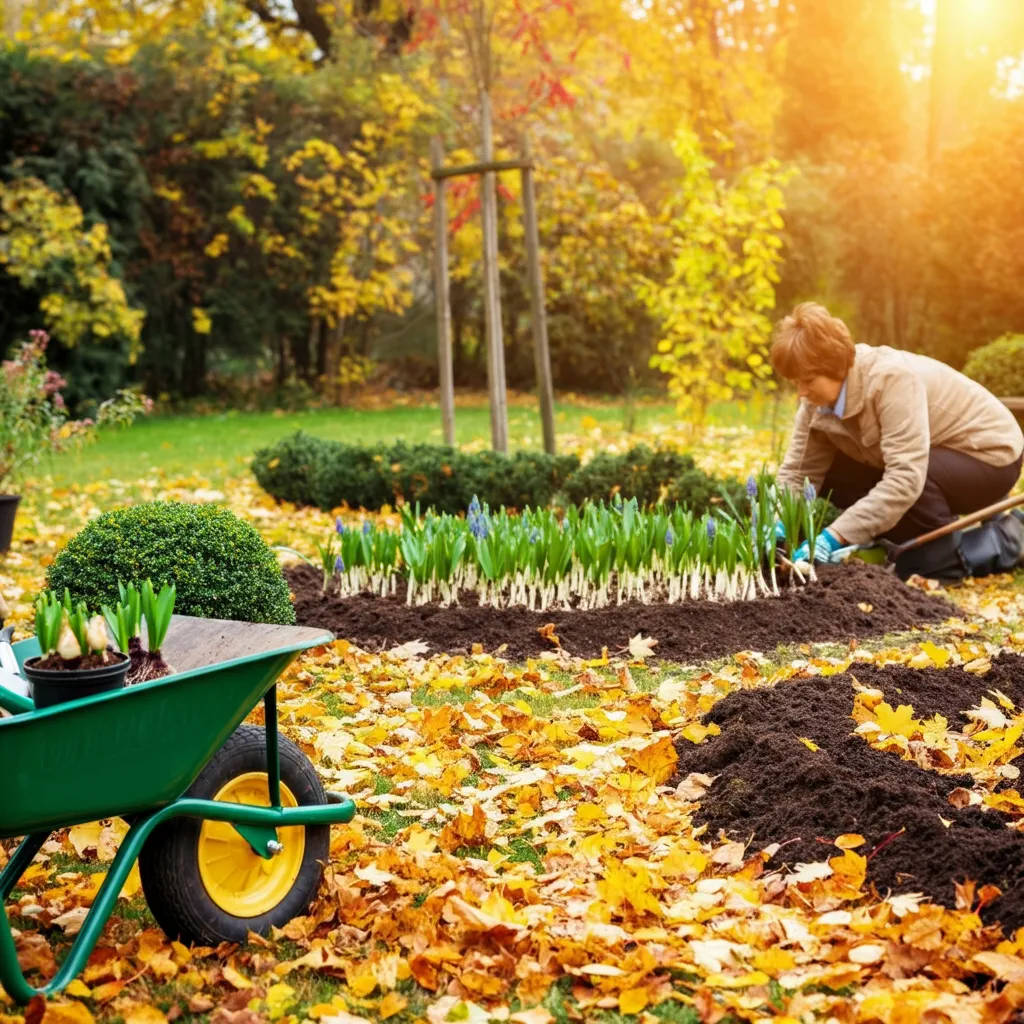
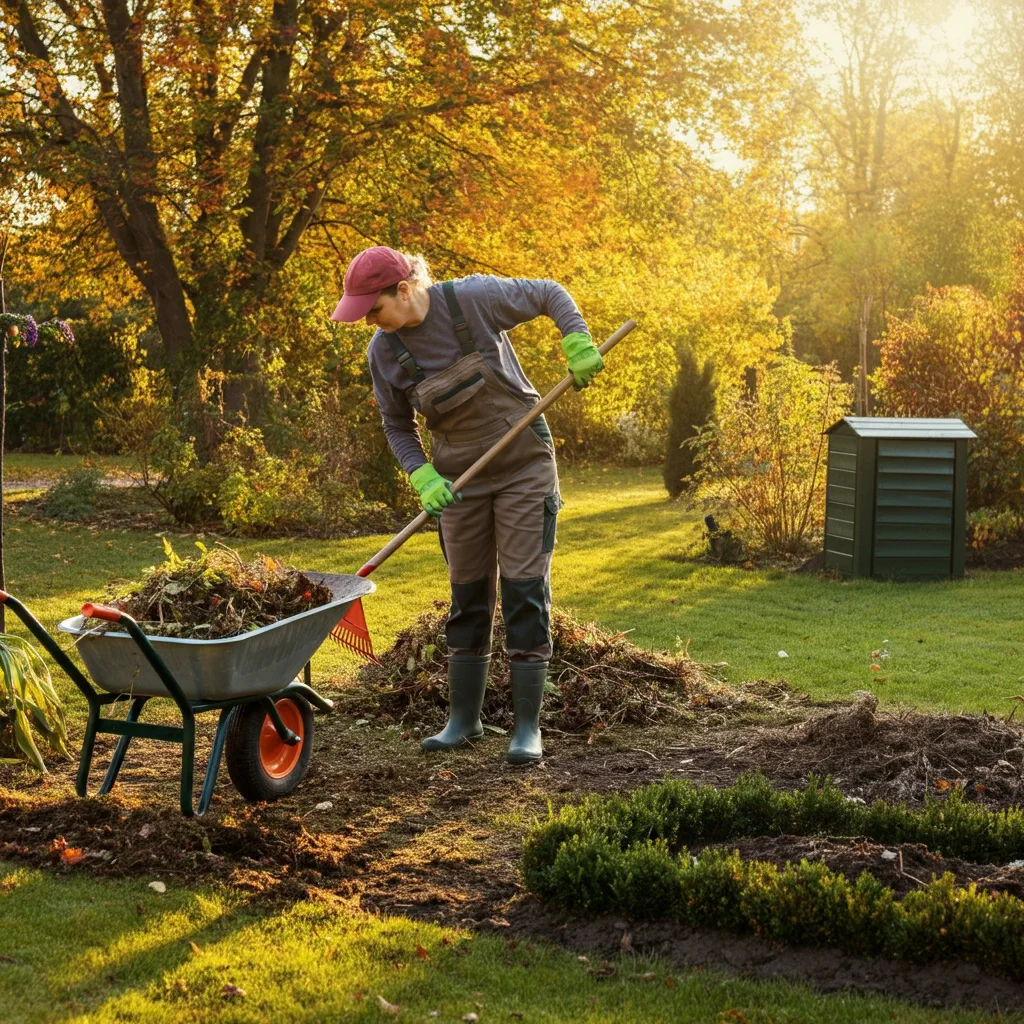
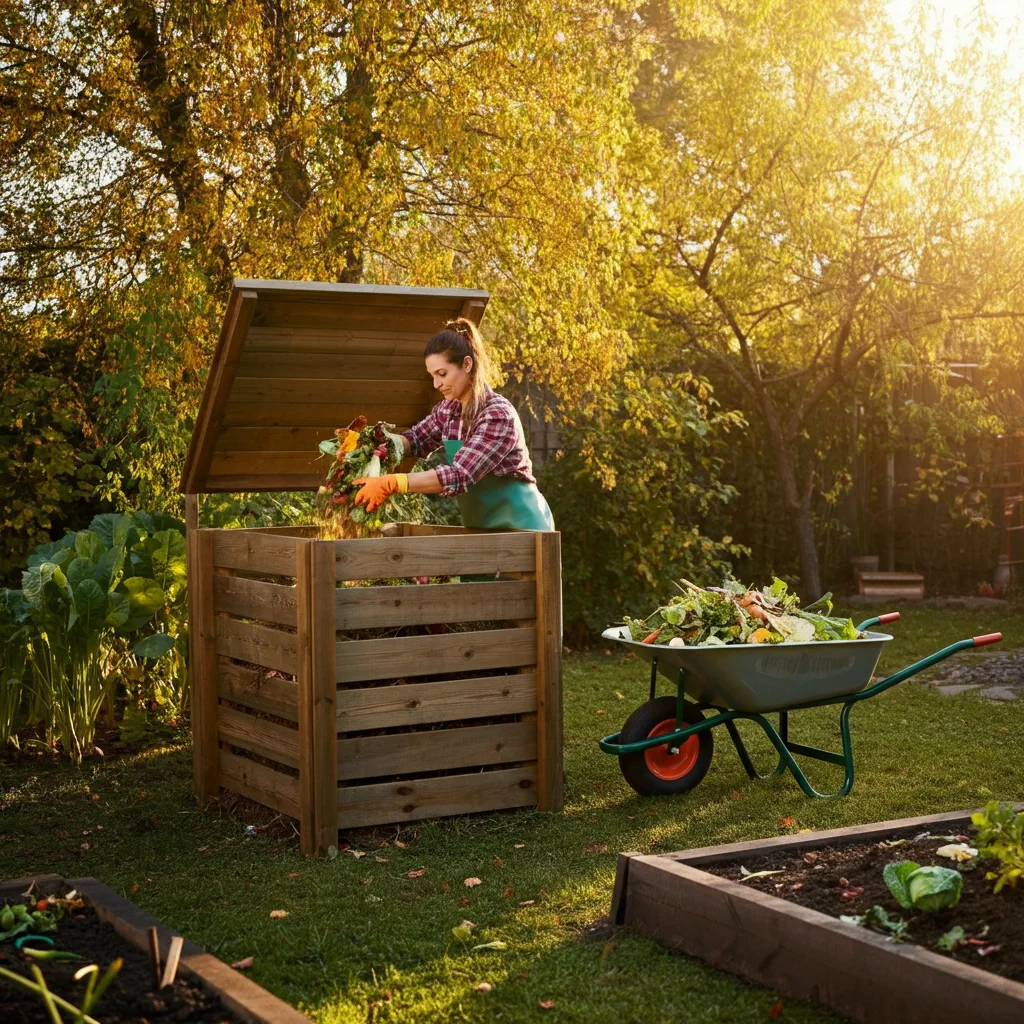
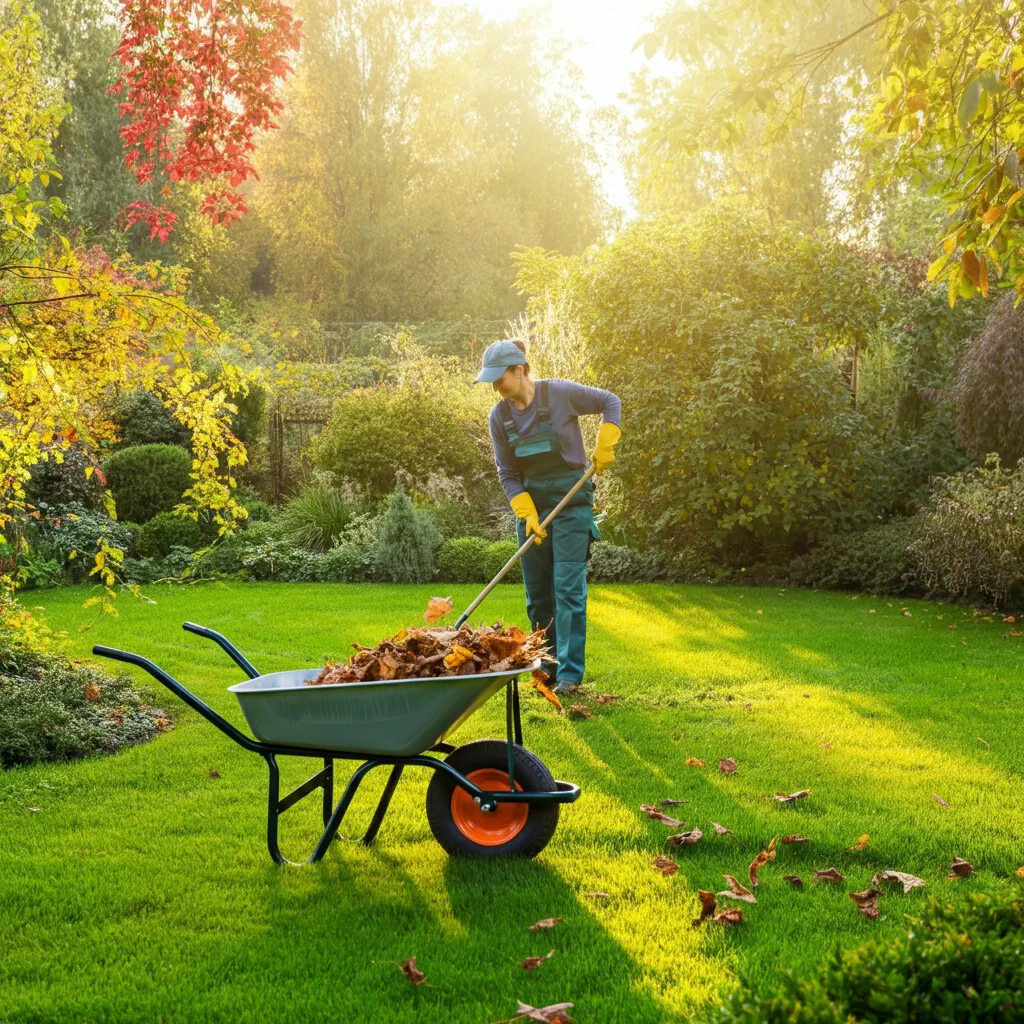
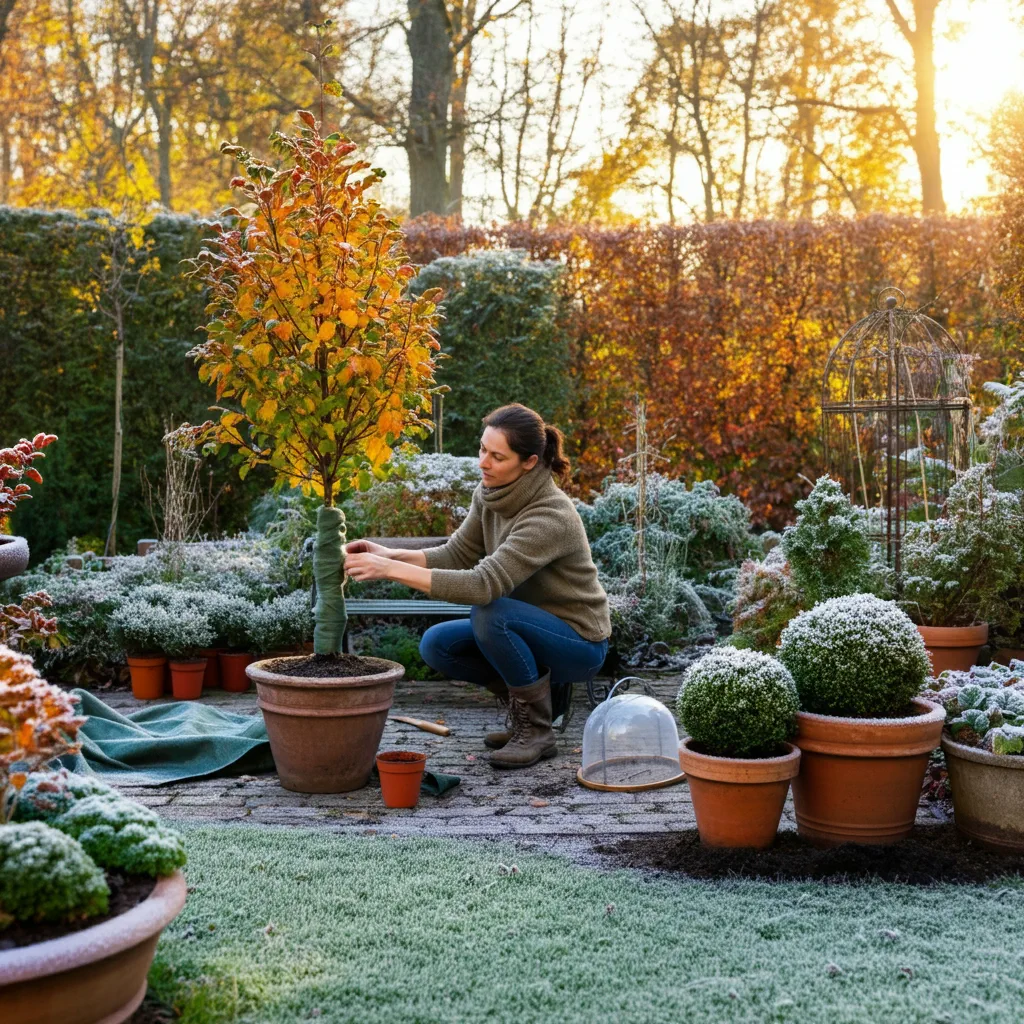











Community Feedback